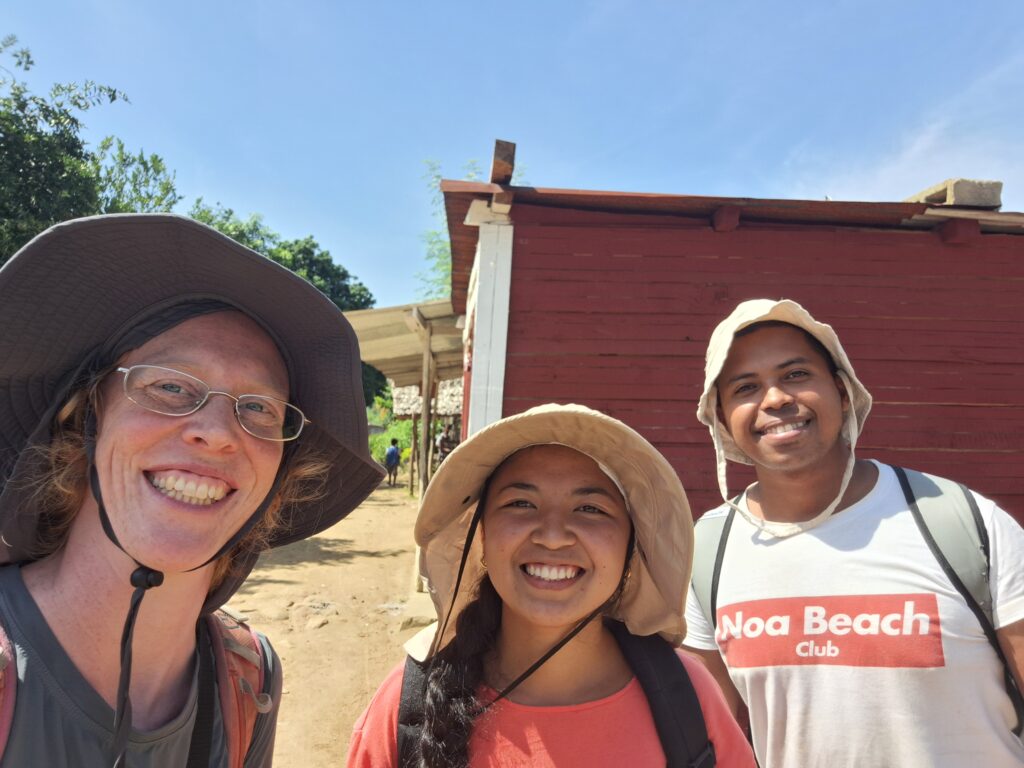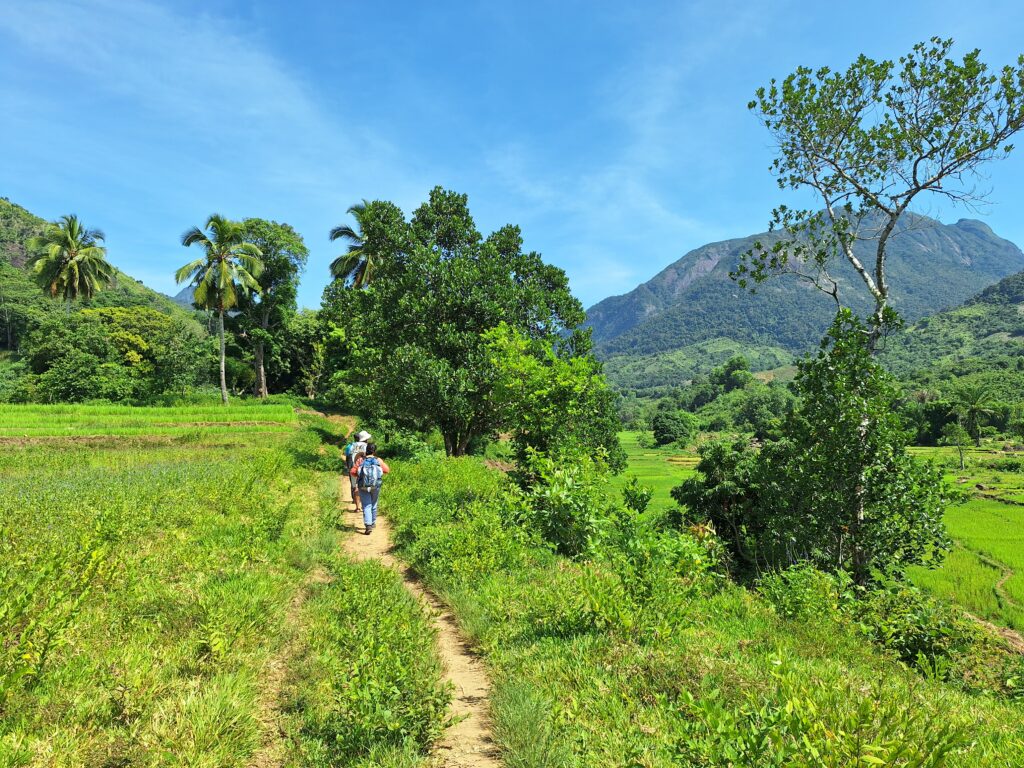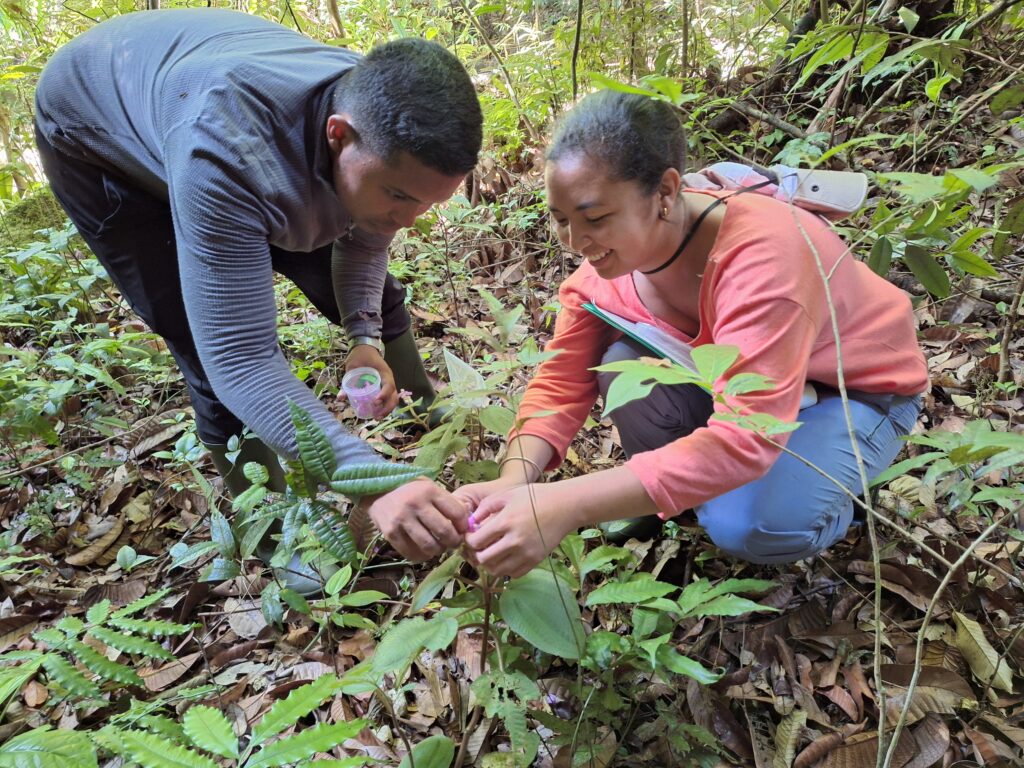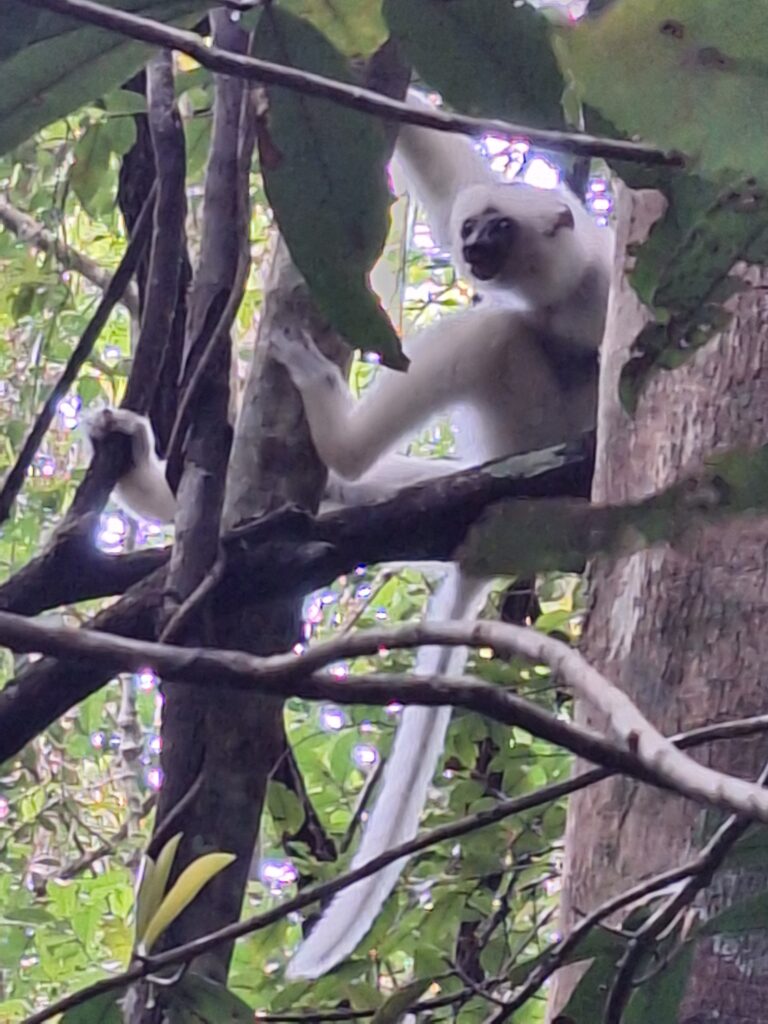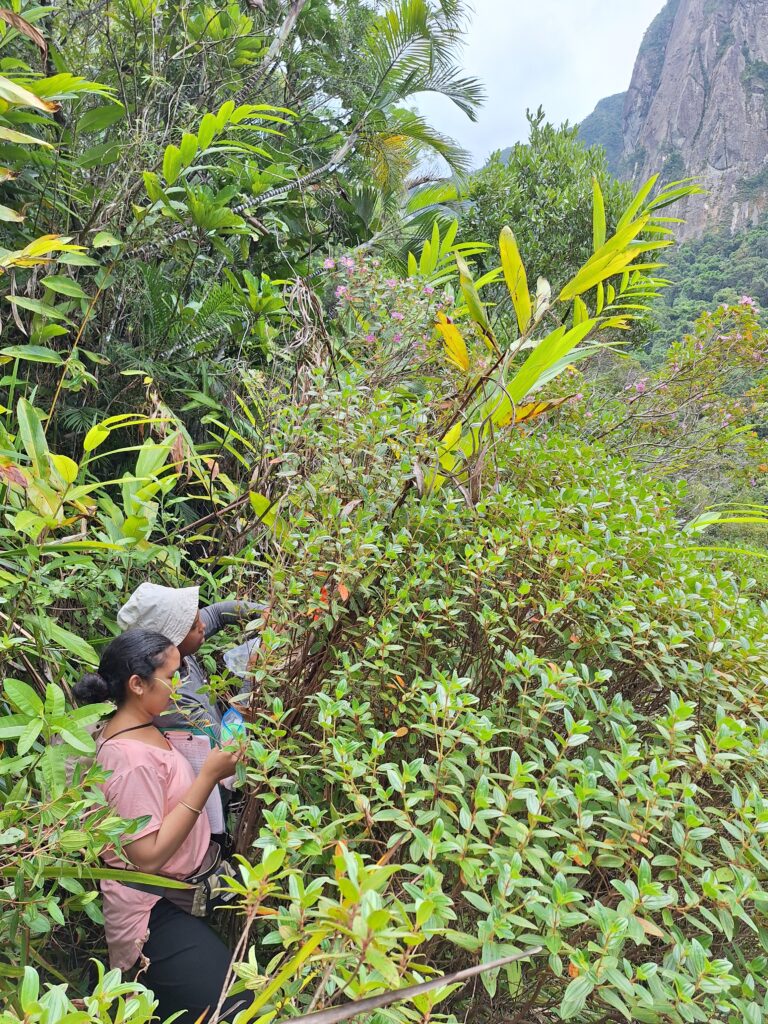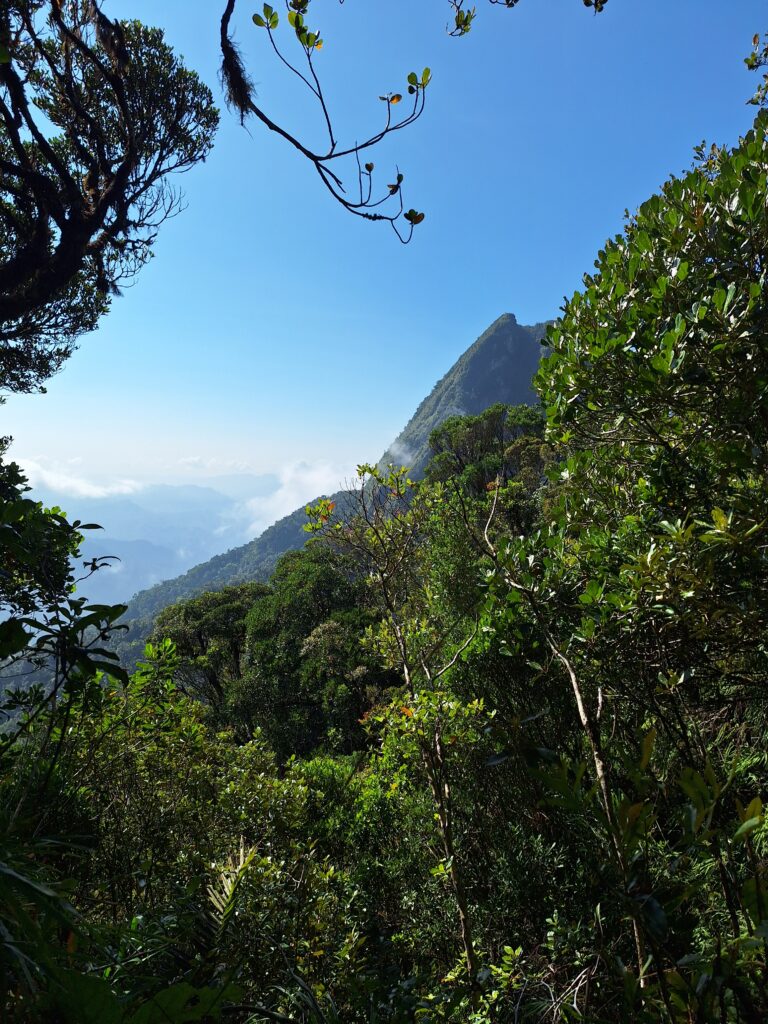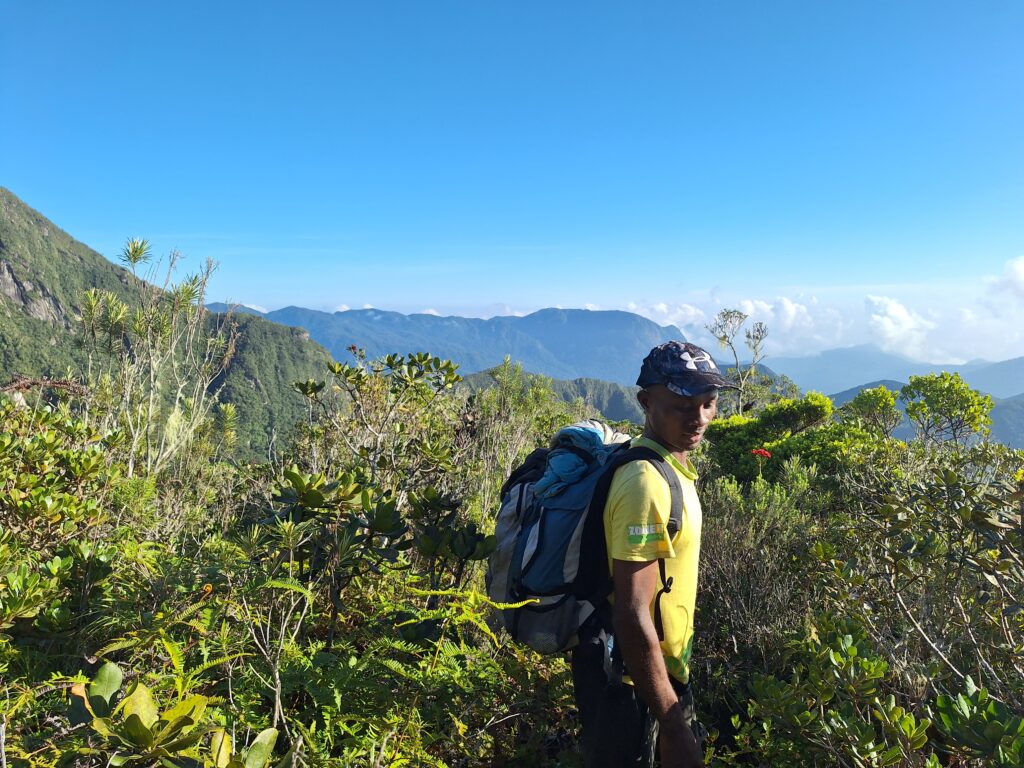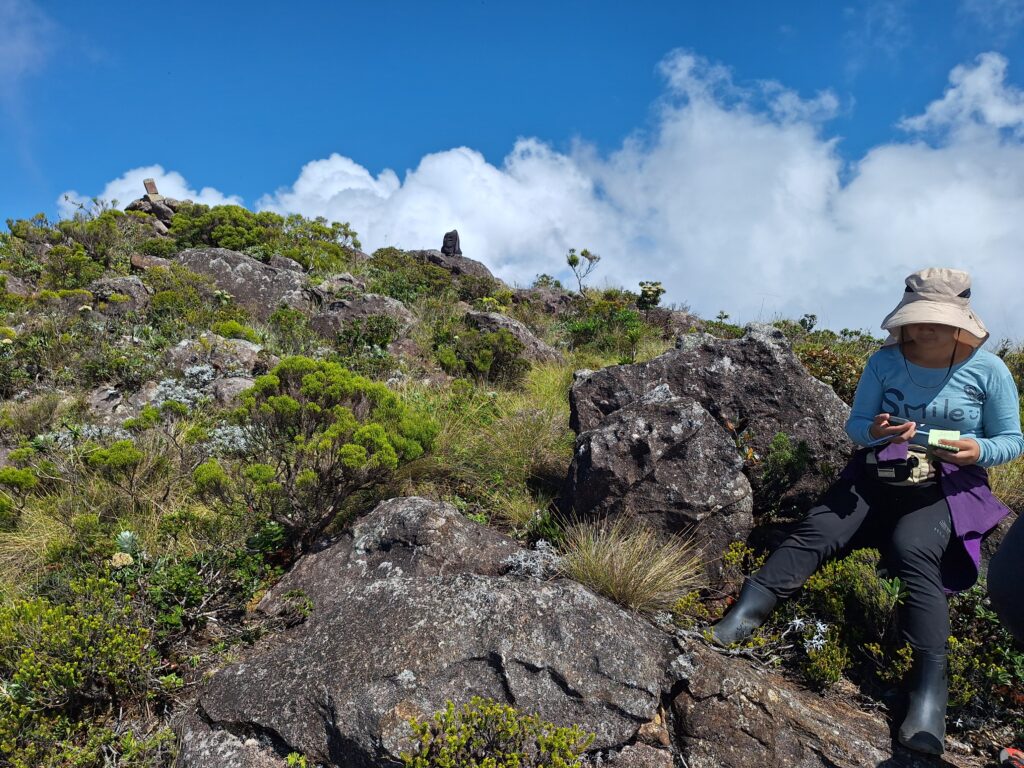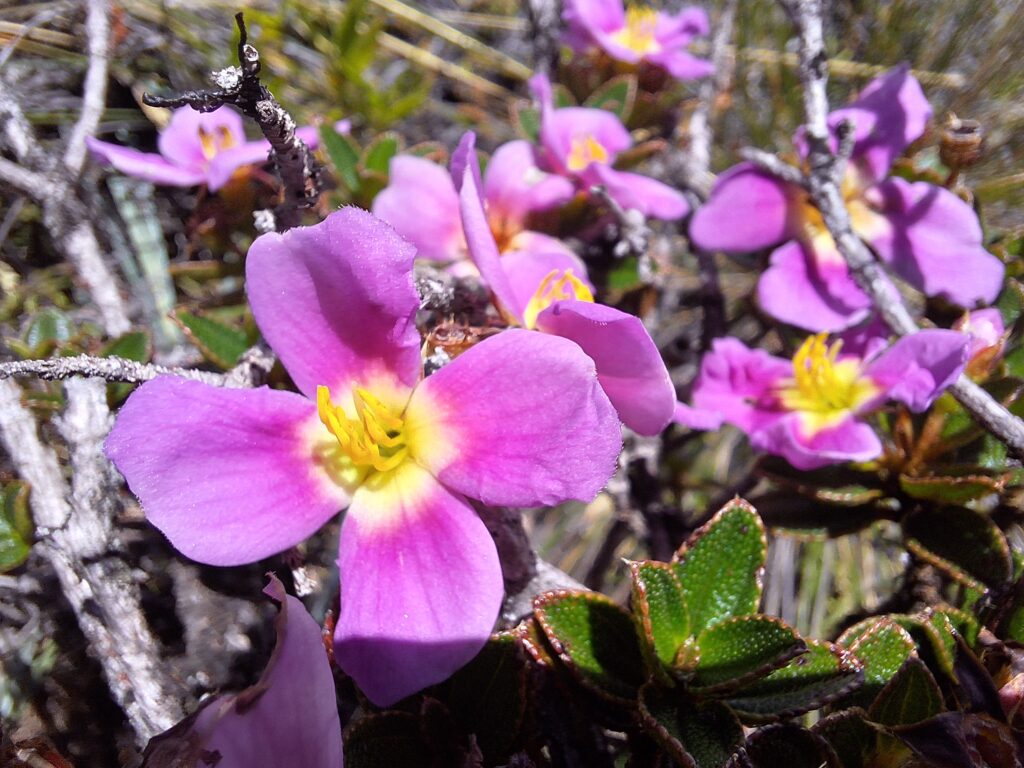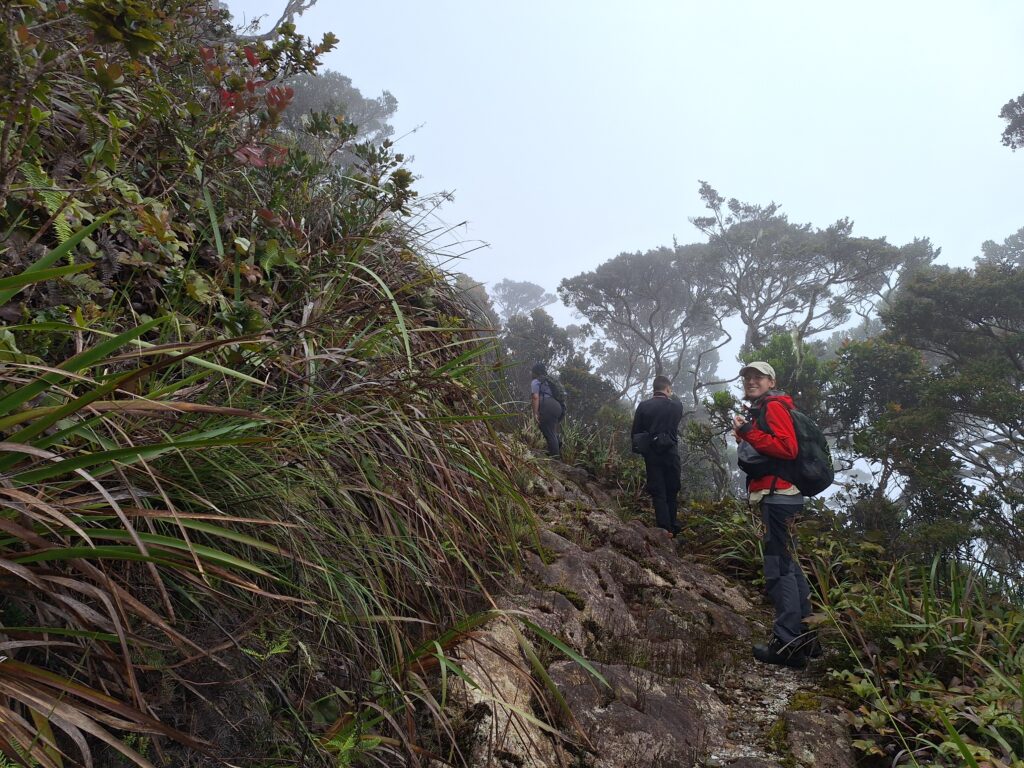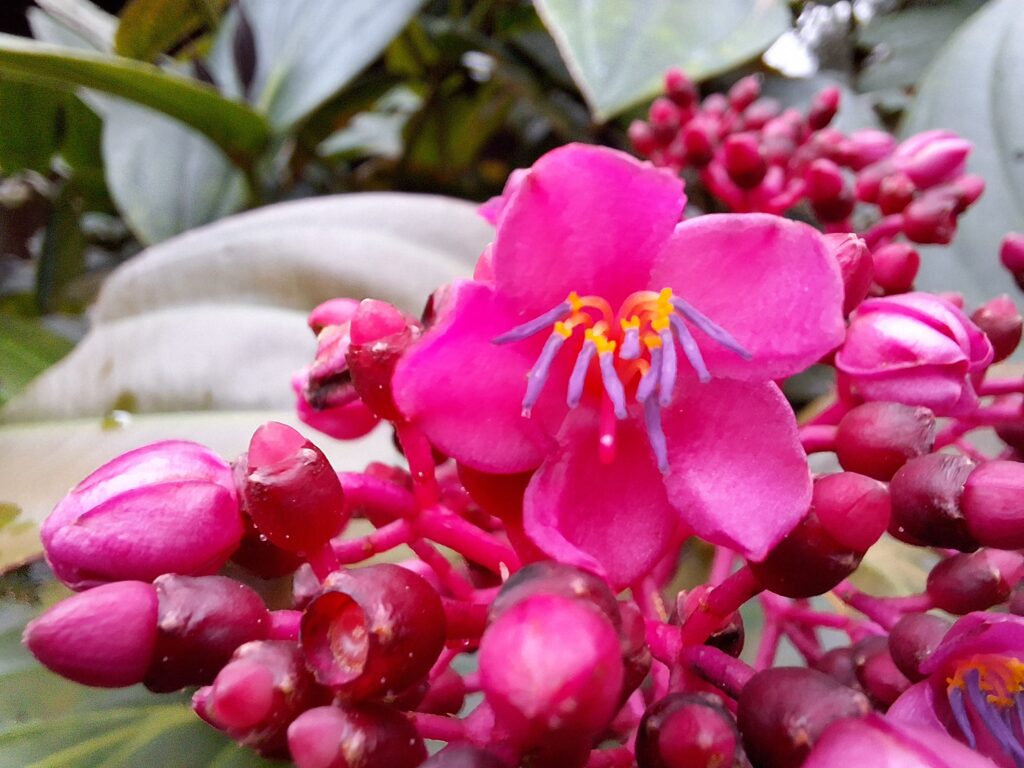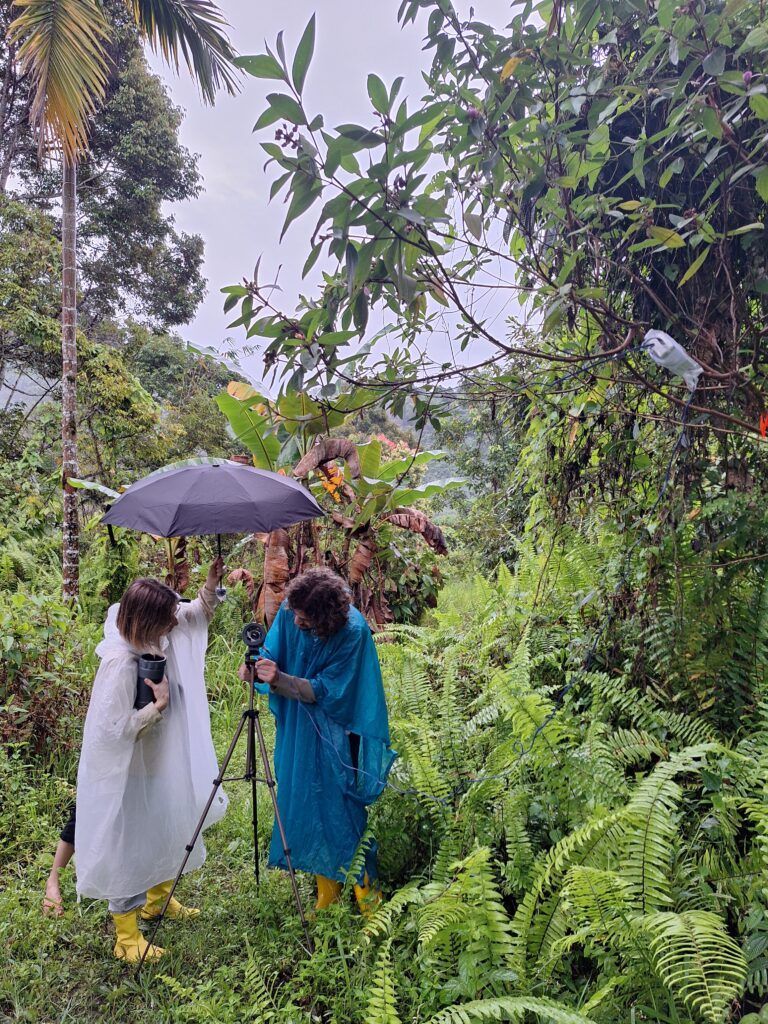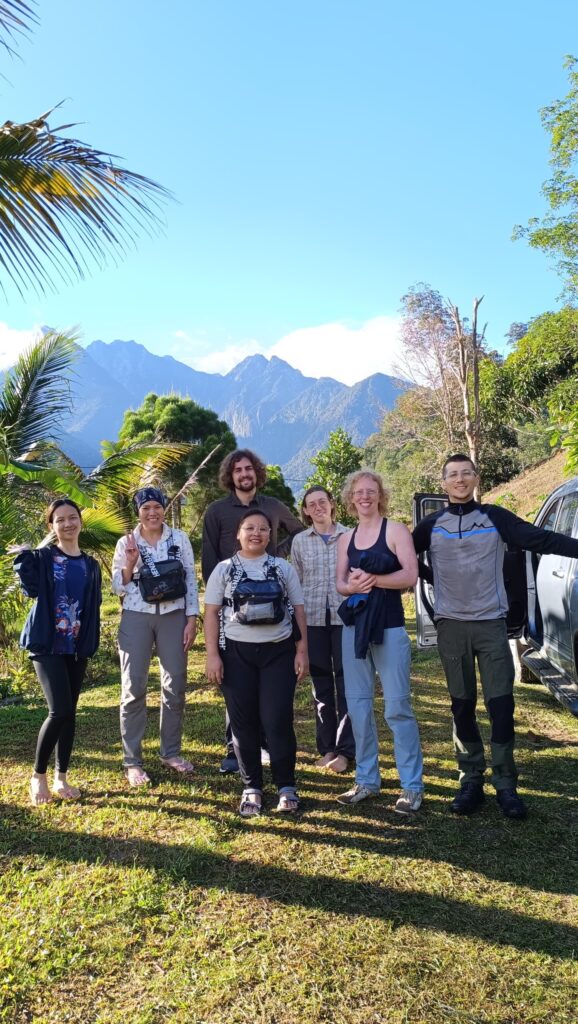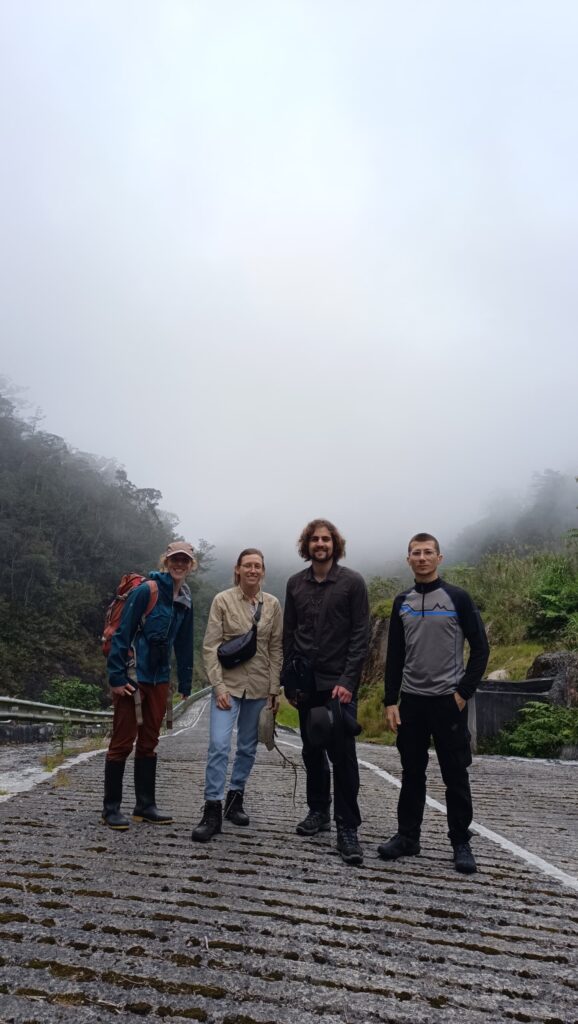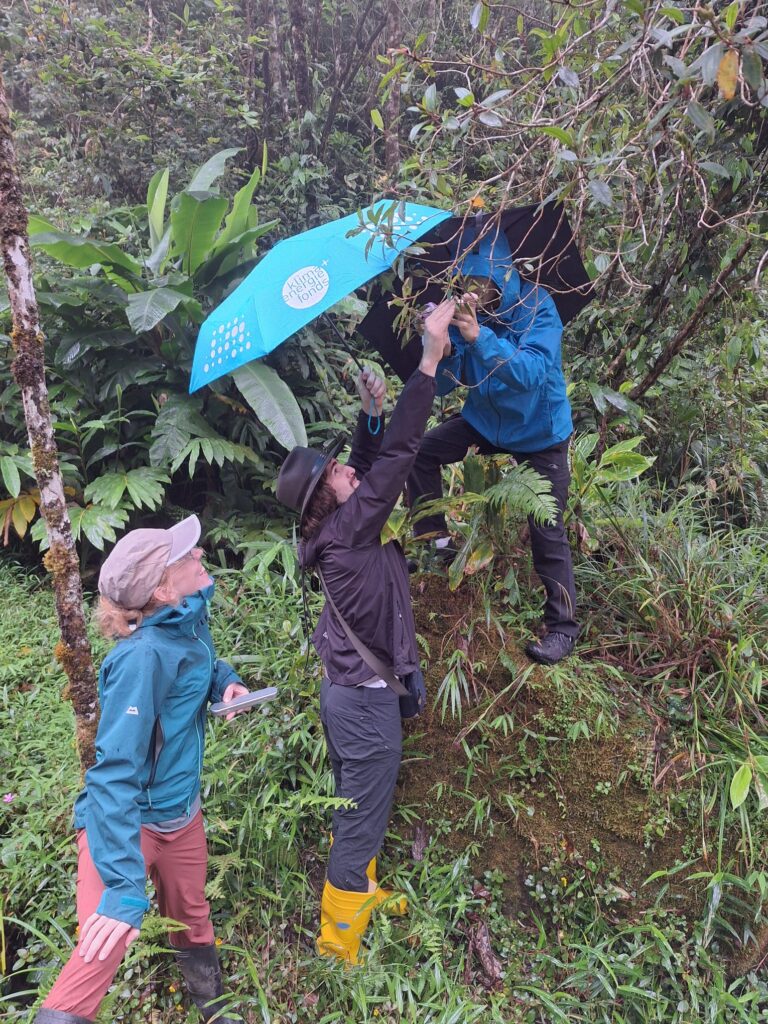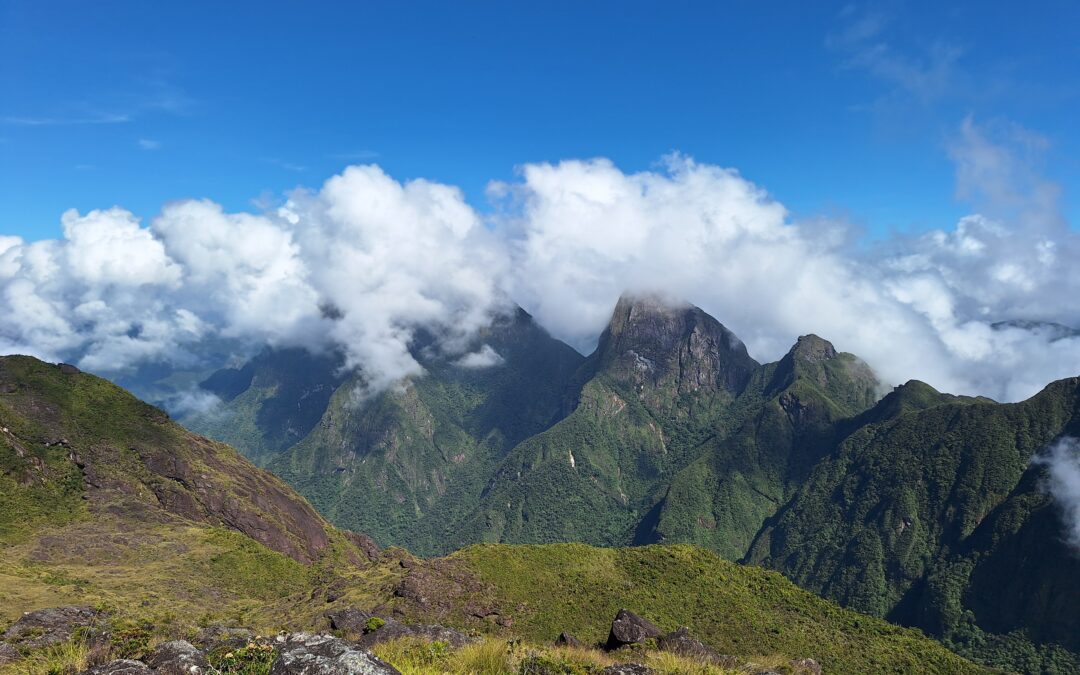In the past month, Agnes had the great opportunity to travel to two of the world’s most outstanding islands: Madagascar and Borneo. Madagascar is the world’s oldest island, fourth largest in size, and a global biodiversity hotspot, with over 80% of its plants being endemic – and 99% of Malagasy Melastomataceae species being endemic! Borneo is the world’s third largest island and with Mount Kinabalu (4095 masl) features the highest mountain between the Himalaya and mountains in New Guinea, again boasting with a large diversity of endemic Melastomataceae.
Agnes travelled to both places with the aim of training student groups in the frame of the ERC project MountBuzz. In Madagascar, Agnes met up with Lalaina Ramiliarisona, our new Malagasy PhD student in MountBuzz. In the course of the next four years, Lalaina will investigate the Melastomataceae of Marojejy National Park in North-Eastern Madagascar. Mount Marojejy is 2132 m high and a hike up along the summit trail takes us from rice fields through pristine primary lowland rainforest across mountain streams to montane rainforest up into the alpine scrublands above treeline. Along this elevational gradient, we can encounter many different Melastomataceae species of the genera Gravesia, Medinilla, Memecylon, Dichaetanthera, Rousseauxia, and more. In her project, Lalaina will work on a checklist of the local species, and, with their showy flowers and often colorful fleshy fruits, produce vignettes for all the species which may be encountered by hikers along the trail. Marojejy National Park is not only a stunning place for research, but also attracts many tourists and is used by local schools as hub for environmental education. Hence, putting together a pamphlet on the local Melastomataceae and their flower and fruit ecology may serve as an example for environmental education in the future. Lalaina will hence also study the flowering and fruiting phenology as well as pollination and dispersal ecology of the Melastomataceae species encountered along the Marojejy gradient.
After their trip to Marojejy National Park, Agnes went on to the island of Borneo to train a mixed team of students from the University of Vienna (Imran Sadovic, Isadora Skudelny, Andrea Errante) and the Universiti of Malaysia Sabah (Belle Damasus). Together with our local collaborators Florina Anthony and Sze Huei, we spent the first week exploring various sites at different elevations around the majestic Mount Kinabalu. Like in Madagascar, the diversity of Melastomataceae is highest in the intermediate elevations in the montane rainforests. The team found species both in flowers and fruits, leading to a spontaneous combination of methods to study both the pollination and dispersal ecology of Melastomataceae. For the next two months, the team will work around these different sites of Mount Kinabalu to carry out the whole MountBuzz protocol, including pollinator observations, bee identification, searching for more plants, making herbarium specimens, performing cross-pollination and self-pollination treatments for Melastomataceae, measuring flower and fruit traits etc. Besides Melastomataceae, there are many other enigmatic plants to see around Mount Kinabalu, with the lowland rainforests featuring the world’s largest and stinkiest flowers (Rafflesia) and the high elevation elfin forest boasting with a large diversity of carnivorous pitcher plants (Nepenthes). The Melastomataceae genera encountered by the team include shrubs like Medinilla, tiny herbs on the forest floor from genus Sonerila, climbers reaching high up in the canopy such as Catanthera, and small trees like Melastoma or Dissochaeta.
